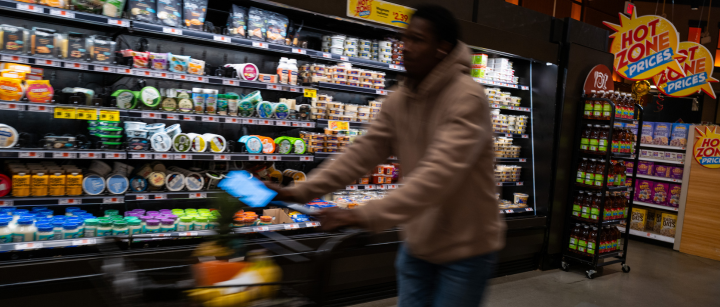Listen to the article
Political Claims on Inflation Paint Conflicting Economic Pictures
Six months into President Donald Trump’s second term, Republicans and Democrats are offering starkly different assessments of the administration’s impact on inflation and prices, with both sides using selective data to support their narratives.
“The economy is roaring, business confidence is soaring, incomes are up, prices are down and inflation is dead,” Trump declared at the White House Faith Office luncheon on July 14.
Democratic House Minority Leader Hakeem Jeffries painted a contrasting picture that same day: “Costs aren’t going down in the United States of America, costs are going up. America is too expensive. And things aren’t getting better under Donald Trump and House Republican rule, they’re getting worse.”
The reality, according to economic data, lies somewhere between these competing claims. Inflation, which had increased substantially during the first half of President Biden’s term—reaching 9.1% for the 12-month period ending in June 2022—has moderated. However, contrary to Trump’s assertion, inflation isn’t “dead.” The Consumer Price Index showed a 2.7% inflation rate for the 12 months ending in June, up 0.8% from January to June.
When asked for supporting evidence, the White House did not respond to requests clarifying Trump’s statements. Jeffries’ office said it would “let the Leader’s comments on the record speak for themselves,” pointing to rising CPI figures and increases in prices for specific items like groceries and beef.
A closer examination of key consumer products reveals a mixed economic picture that defies the simplistic narratives from both political parties.
Grocery prices have shown modest increases, rising 0.6% from January to June and 2.4% year-over-year. The USDA predicts food-at-home prices will increase approximately 2.2% in 2025.
“Grocery prices have been accelerating,” notes Ernie Tedeschi, director of economics at Yale University’s nonpartisan Budget Lab. However, he explains that “a little bit of grocery inflation is typical, and it’s not clear that the president has much to do with recent grocery price dynamics.”
One area where presidential policy could impact prices is tariffs. The average effective tariff rate has jumped from 2.4% in January to 20.6% by mid-July due to Trump’s policies. The Budget Lab predicts these tariffs will cause food prices to rise 3.7% more than otherwise expected over the next two years.
Egg prices, which Trump highlighted as a success story, have indeed fallen 23.8% since January. However, prices remain 39% higher than a year ago. While Trump credited his administration’s strategy for the decline, economists attribute it primarily to seasonal factors.
“Most of the decline in egg prices this year was due to bird flu season ending, which typically happens when wild birds are migrating,” explains Jeremy Horpedahl, an economics professor at the University of Central Arkansas. “Wholesale egg prices started falling right at the beginning of March 2025, which is before most of the new policies of the Trump administration went into place.”
Meanwhile, ground beef hit a record high of $6.10 per pound in June, an 11.1% increase since January. This rise stems from drought conditions that have affected cattle farming in recent years, leading to the smallest beef herd inventory since 1951. Trump’s threatened 50% tariff on Brazilian imports, set to take effect August 6, could further strain beef supplies.
“Imported beef comprises about 20% of USA beef supply and Brazil is 30% of the imported beef coming to the USA,” says Bob Chudy, a consultant for U.S. beef importers. “Since the 50% announcement all exports to the USA from Brazil have come to a complete halt.”
Gasoline prices have remained relatively stable, with the national average at $3.12 per gallon in late July compared to $3.11 when Trump took office in January—a difference of less than 0.5%. This stability contradicts Trump’s claims about dramatic decreases and “the lowest level in five decades.”
“It’s a balance of the global economy, not just the U.S. economy, that dictates oil and gas prices,” explains Patrick De Haan, head of petroleum analysis at GasBuddy.
The overall energy picture is mixed, with the CPI for energy down 1.6% between January and June, while household energy costs rose 5.5%. Electricity prices have increased about 6% during the same period and are projected to continue rising faster than inflation through 2026.
As both parties continue to make conflicting claims about the economy, the data suggests that price trends are complex, influenced by multiple factors beyond presidential policies, and still evolving as the administration’s economic agenda takes shape.
Verify This Yourself
Use these professional tools to fact-check and investigate claims independently
Reverse Image Search
Check if this image has been used elsewhere or in different contexts
Ask Our AI About This Claim
Get instant answers with web-powered AI analysis
Related Fact-Checks
See what other fact-checkers have said about similar claims
Want More Verification Tools?
Access our full suite of professional disinformation monitoring and investigation tools



